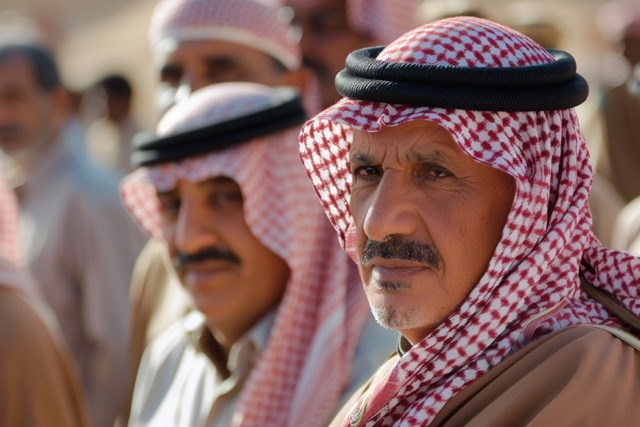Reviving the Arabian Oryx: A Story of Resilience and Conservation
JEDDAH: The Arabian oryx, a desert antelope native to the peninsula, holds immense cultural significance, evidenced by its many ancient rock-art depictions found throughout the region. And yet, this distinctive species was driven to the brink of extinction.
The Arabian oryx has been rescued from oblivion thanks to the proactive rewilding efforts of Saudi Arabia’s conservationists — reversing the devastating toll that years of overhunting and habitat loss has taken on its fragile population.
From Brink of Extinction to Flourishing in the Wild
While once in critical decline, they can now be found in the wild across Arabia, including in Saudi Arabia’s historic northwestern AlUla region and the northeastern reaches of the Kingdom.
Today, the species is not only a symbol of the heritage of Saudi Arabia and the Middle East but emblematic of environmental renewal.
Their numbers had dwindled dramatically over recent decades owing to overhunting, drought, poisoning, and habitat encroachment as agriculture and human settlements expanded, depriving them of grazing pasture.
A Remarkable Recovery Effort
In 1972, the last wild Arabian oryx was killed by hunters in Oman. Hunters have long prized the animals for their horns and meat.
To save the Arabian oryx from extinction, international organizations launched a scheme to capture wild specimens and establish breeding centers. With their numbers since restored, groups have been reintroduced into their original habitats.
Saudi Arabia has played a crucial role by establishing specialized breeding centers and veterinary facilities for the Arabian oryx. Many have been relocated to protected areas that best mirror their natural habitats, to help them flourish in the wild.
Conservation Efforts and Success Stories
The creation of the Imam Turki bin Abdullah Royal Nature Reserve in 2018 offered an ideal setting in which the species could multiply. A breeding program established by the reserve in 2021 resulted in a 60-fold increase in the Arabian oryx population by early 2024.
Abdulmajeed Al-Dhaban, deputy executive vice president of operations at the reserve, said the Arabian oryx’s resilience in its harsh desert habitat is because of its heat-reflective white coat and ability to go without water for long periods.
In fact, the species can survive for up to 11 months without drinking water by obtaining fluids from dew and desert plants.
Collaboration for Conservation
“The reserve’s conservation efforts extend across various fronts, including collaboration with governmental bodies and local communities to develop regulations protecting the Arabian oryx from poaching and illegal trade,” Al-Dhaban told Arab News.
“Educational campaigns raise awareness about conservation, with schools and local institutions actively involved in educating younger generations.
“Scientific research and monitoring are supported to better understand the Arabian oryx’s needs and develop effective protection strategies. Additionally, sustainable development and ecotourism are emphasized to promote wildlife growth and provide income for local communities, encouraging responsible resource management.
Restoring Balance to Nature
The revival of the Arabian oryx is a part of a concerted, long-term effort by conservation groups, national rewilding programs, and zoos to establish and slowly increase breeding populations before their eventual reintroduction into the wild.
“The RCU releases Arabian oryx into AlUla’s network of nature reserves as part of its comprehensive rewilding strategy that is helping to restore balance to the natural world and revive once-degraded ecosystems,” said Browne.
“Teams from RCU’s wildlife and natural heritage department work to strict guidelines established by our international partners, the International Union for the Conservation of Nature, to ensure all our efforts in the wild are both scientifically sound and follow clear conservation practices.”
Arabian oryx are being reintroduced into AlUla’s nature reserves to help restore the ecological balance. “A total of 250 animals have been released so far,” said Browne. “It is hoped that numbers will increase as populations establish themselves and more wild births are recorded.
“We identify key areas with the correct type and amount of vegetation to support newly-released animals, and to make sure we aren’t over-releasing new populations into one location.
“Arabian oryx have quite specific habitat requirements. Reviving Nature in AlUla: The Conservation Efforts Behind the Return of Native Species
In the rugged terrain of AlUla’s nature reserves, the steep canyons and mountains may not be everyone’s cup of tea. But for those who prefer open, sandy areas, the beauty of this desert landscape is unparalleled.
Thanks to the release of the Arabian oryx, native plants and vegetation are making a comeback, and the soil is being restored to its former glory. It’s a sight to behold as the landscape transforms before our very eyes.
The conservation work in AlUla is truly inclusive, engaging with local communities and offering opportunities for training as rangers. These dedicated individuals keep our vast reserves safe and secure, ensuring that the environment is monitored and protected.
With sustainable land-management programs in place, the RCU is actively rehabilitating degraded sites, managing rangelands, and fighting desertification. The return of native species, like the majestic Arabian oryx, is a testament to their efforts.
The partnership with the Prince Mohammed bin Salman Royal Reserve Development Authority is a game-changer, strengthening collaboration on wildlife protection and sustainable regeneration. Together, they are paving the way for a brighter future for AlUla’s natural habitats.
Through extensive planting of native flora, using seeds from the RCU’s seed bank and plant nursery, the long-term recovery of vegetation is well underway. The valleys, wadis, and mountains of AlUla are being regreened, creating a more hospitable environment for all creatures big and small.
In the heart of AlUla’s nature reserves, populations of Arabian oryx and other animals are closely monitored using advanced tracking technology. A team of over 150 dedicated rangers, all from the local community, conduct regular patrols to ensure the safety of these precious animals.
The people of AlUla have always had a deep connection with their natural surroundings, and with initiatives like these, that bond is only growing stronger. The future looks bright for AlUla, as the land thrives once more with the return of its native species. Reviving AlUla: A Conservation Effort Like No Other
In a groundbreaking effort to regenerate AlUla and restore its natural balance, the Royal Commission for AlUla (RCU) is taking bold steps to reinvigorate the longstanding bond between the community and nature.
From conservation rangers patrolling the area to the reintroduction of native plant species in AlUla’s nature reserves, the RCU is at the forefront of promoting ecological awareness and engagement. Educating farmers and locals about the importance of preserving wild animal populations is also a key focus of their work.
According to Browne, a spokesperson for the RCU, the ultimate goal is to revive and maintain the natural environment for future generations. The commission places a strong emphasis on respecting traditional practices that have shaped the community’s environmental views and principles.
Enter the World of Rewilding Arabia
At the heart of the RCU’s plans lies the return of the leopard, a symbol of conservation and regeneration in Saudi Arabia. With a mission to conserve and regenerate the kingdom’s landscapes and wildlife, the RCU is spearheading efforts to bring back this majestic creature to its natural habitat.
Through initiatives like rewilding, the RCU is paving the way for a more sustainable and balanced ecosystem. By focusing on the preservation of native species and habitats, the commission is setting a new standard for environmental stewardship in the region.
Join the RCU on their journey to rewild Arabia and witness the beauty of nature’s revival firsthand. Experience the magic of conservation and restoration as the leopard makes its triumphant return to the Saudi Arabian landscape.

